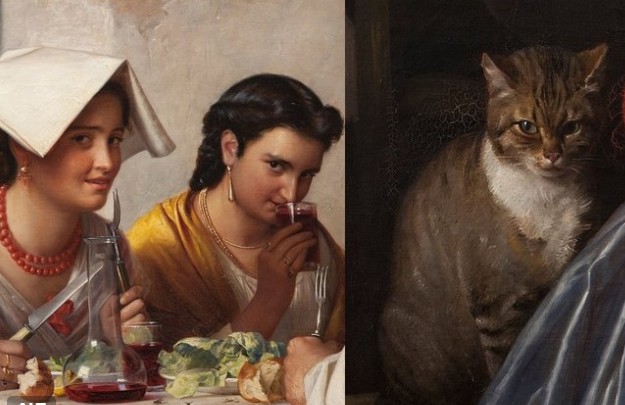Extraordinary Art: The Whole Table Is Judging You, Even the Cat
Art has a unique way of capturing emotions, telling stories, and making statements that transcend words. Among the vast array of artistic expressions, one of the most intriguing is the concept of being “judged”—a theme that resonates deeply with the human experience of scrutiny and self-consciousness. The phrase, “The whole table is judging you. Even the cat,” paints a vivid picture of a scenario many can relate to: the discomfort of being under observation.
But what makes this concept extraordinary in art? Let’s dive into its meaning, symbolism, and the artistic power it holds.
The Power of Judgment in Art
Judgment is a universal experience, and art often mirrors this feeling to evoke a strong emotional response. Whether it’s through a still-life composition of inanimate objects staring back at you or a whimsical scene featuring a judgmental cat, the art challenges viewers to confront their own insecurities, anxieties, and societal pressures.
1. Universal Relatability
The imagery of a “judging table” resonates because we’ve all been there. A tense family dinner, a high-stakes presentation, or even an imaginary scenario where we feel the silent criticism of those around us. This universal feeling makes the art engaging and relatable.
2. The Cat as a Symbol
Cats are known for their enigmatic stares, often interpreted as judgmental. In art, the cat becomes a metaphor for silent observers in our lives—those who watch without speaking yet make us feel scrutinized. It adds a whimsical and slightly absurd layer to the piece, making it memorable and thought-provoking.
3. Reflection of Modern Society
In today’s hyperconnected world, the idea of being judged extends beyond physical tables to the digital realm. Social media, with its likes, comments, and shares, amplifies the feeling of constant observation. The table and cat imagery can symbolize the omnipresent judgment we face, both online and offline.
Extraordinary Art as a Conversation Starter
Art that evokes judgment often serves as a catalyst for introspection and discussion. A piece with the phrase “The whole table is judging you. Even the cat” prompts viewers to ask themselves:
- Why do I feel judged?
- Is the judgment real or imagined?
- How do I react to the opinions of others?
These questions transform the art from a visual experience to a personal journey, making it extraordinary.
The Role of Humor and Whimsy
What sets this concept apart is the subtle humor embedded in the scene. The cat, with its aloof and haughty demeanor, adds a playful touch to an otherwise intense theme. This balance of lightheartedness and depth is what makes extraordinary art stand out. It invites viewers to laugh at the absurdity of their insecurities while also acknowledging the weight of the judgment they feel.
Inspiration for Artists
For creators, this concept offers endless possibilities:
- Painting or Illustration: A dining table with expressive faces, exaggerated in their judgmental stares, and a cat sitting smugly with piercing eyes.
- Sculpture: A 3D representation of an ornate table with miniature figures and a dominating feline centerpiece.
- Photography: A staged scene where a group of people, pets, or even objects appear to “judge” the central figure.
This theme invites artists to experiment with surrealism, humor, and emotion to create impactful pieces.
Overcoming the Judgment
While the art captures the feeling of being judged, it also offers a subtle message: judgment is part of life, but it doesn’t define you. Whether the judgment is from a table of people or an imaginary cat, its power lies in how much you let it affect you.
Through the lens of extraordinary art, viewers are reminded to embrace their individuality, face judgment with confidence, and perhaps even laugh at its absurdity.
The Final Words
“The whole table is judging you. Even the cat.” is more than just a quirky phrase—it’s a powerful metaphor for the human experience. Extraordinary art centered around this concept taps into universal feelings of scrutiny, balances them with humor, and sparks meaningful conversations about self-perception and societal expectations.
So the next time you feel judged, whether by a person or a cat, remember: it’s just art imitating life. And like any good art, it’s up to you to interpret and respond to it in your own unique way.


